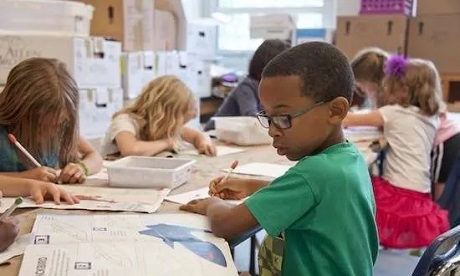Catholic schools are the jewel in the crown of the church in Australia. While parishes continue to decline, the school sector is often booming.
The contrast between ageing congregations and young students is stark. Equally striking is the contrast between relatively youthful school staff and ageing church leaders.
Twelve months ago, with the Plenary Council final assembly still fresh in my mind, I reflected in Eureka Street that if church renewal is to take place, then Catholic schools must embrace and actively support church reform.
My own recent engagement with Victorian Catholic school principals convinced me then that their status, credentials, and ties to young people gave them a pre-eminent place in any such reform.
Twelve months later, in July 2023, as the Synod on Synodality first assembly came closer, another wider speaking engagement with almost 2,000 staff of a dozen Victorian Catholic secondary schools over three weeks, confirmed my belief.
These staff, including but not restricted to leaders and team members in Catholic identity and religious education, have crucial responsibilities and unparalleled opportunities in their daily contacts with teenagers, whether Catholic or from many other backgrounds.
My presentations covered topics like Pope Francis and the Universal Church and the Church in Australia.
If the outcomes of Pope Francis’ 2023-2024 Synod on Synodality, based on the themes of its Working Document, are to penetrate more than skin deep into the Catholic community, schools must be at the forefront.
If not, the Synod will be a wasted effort and a missed opportunity. It will be wasted because it will not catch the attention, much less the enthusiasm, of the next generation.
The task is challenging. Students in Catholic schools represent the face of the present and the future. They are extraordinarily diverse in terms of ethnic and faith backgrounds.
The vast majority, reflecting official surveys of the wider Catholic community, are ‘unchurched’ in the sense of not being regular churchgoers outside of school.
Teachers are confronted, but not really surprised, by the dismal official figures (6 percent) of church attendance for their former students, Catholics aged 20-34.
They themselves represent the equally dismal official figures for church attendance of those aged 35-60. That applies to the Catholic teachers.
The anecdotal evidence offered to me by the school communities and by various priests was that 10 per cent church attendance may be generous.
The universal Church’s ‘experiment with synodality’
Yet the Catholic identity of the schools, often expressed though different charisms, remains profound, even if the challenges posed by student and staff diversity are enormous. These staff development days were couched in beautiful liturgies and inspiring messages from school leaders.
Notably our schools are more open and inclusive than our parish and diocesan churches are. They are a sign of where the church should be on matters like inclusion and there is no going back.
These schools occupy a world in which value statements such as ‘all faiths, genders, sexualities and cultures are respected, accepted and welcome’ are predominant.
Outdated church teaching about sexuality and gender is implicitly and explicitly rejected. Most students and staff would have it no other way.
The challenges that I threw out were often tossed back at me through tough but respectful table-talk and public questioning.
Occasionally my openly pro-renewal stance was thought disrespectful to church tradition and teaching.
For some panellists and respondents my message of dramatic church decline in Australia was too dark and hopeless; for others my own hope in what I called the universal church’s ‘experiment with synodality’ was too optimistic because they thought change was impossible.
They could see little sign of reform happening around them; and made clear that even when there were signs of progress it was happening much too slowly.
Frequently I was asked when the church would accept equal rights for women. The general tone of voice was that the church should just get on with it because the status quo was indefensible.
Often, I was specifically asked when the church would allow women priests.
My response that the best we could hope for in the short to intermediate term was the introduction of the female diaconate was hardly satisfactory.
When I presented as a breakthrough by Pope Francis the fact that there would be 54 women among the 363 voting members of the Synod in Rome in October my audiences still wanted much quicker progress on gender equality.
Catholic secondary schools are a parallel universe as far as the diocesan and parish churches are concerned.
Their staff take no pleasure in the decline of the latter and recognise the implications for their schools; but, even in the middle of World Youth Day (which some current students were attending as had some staff on previous occasions) they could see no obvious ways of halting the decline.
Some staff could see a future in which the school rather than the parish was the heart of the church. But one teacher told me to my face that my suggestion that schools were the future of the church was not just unlikely but ‘vacuous’.
Most staff, teaching and non-teaching, welcomed an opportunity to enhance their own learning by discussing present developments and future aspirations for the church.
They are at the coalface where church and society meet, and they taught me a great deal about the real world of schools and church.
- John Warhurst is an Emeritus Professor of Political Science at the Australian National University and former member of the Plenary Council. His visits to Catholic secondary schools were hosted by the Principals Association of Victorian Catholic Secondary Schools.
- First published in La Croix. Republished with permission.
News category: Analysis and Comment, Great reads.




